8 Apr 2019
Young cattle: considerations to help farmers plan for successful rearing
Harry Eastwood runs through some of the important considerations for farm animal vets and their clients, with particular emphasis on vaccination and disease prevention, husbandry and nutrition.
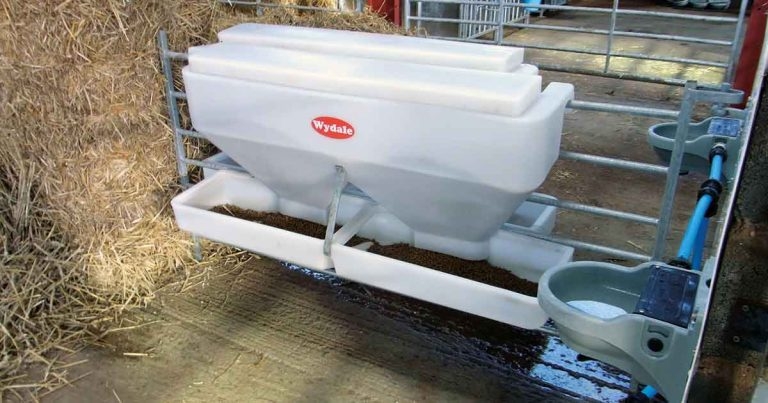
Clean water and fresh starter feed are important to maximise intakes.
Cattle aged one year old or younger represent 29% of the UK cattle population1 and youngstock rearing is a very important part of farm management.
However, fewer than 15% of dairy heifers reach their first lactation and 8% of calves are stillborn2.
According to the MSD National Youngstock Survey 2018, 37% of farmers felt youngstock didn’t get enough attention, and more than 50% struggled to find time to properly care for young cattle. Routines, role distribution and protocols are key areas that can help farmers with time, but it is important to identify the problems that need to be addressed and how they can be fixed3,4.
Key performance indicators (KPIs) and benchmarking are a good place to start to see if room for improvement exists. However, for accurate interpretation you need to stress the importance of adequate data and recording. Table 1 includes useful KPIs that highlight the overall health and production of youngstock.
| Table 1. Useful key performance indicators (KPIs) that highlight the overall health and production of youngstock | ||
|---|---|---|
| KPI | Definition | Target |
| Calf weight at weaning (kg) | Average calf weight at weaning | Greater than double birthweight |
| Daily liveweight gain to weaning (kg/day) |
(average calf weight at weaning [kg] – birth weight [kg]) OR (average calf weight at weaning [kg] – purchase weight [kg]) |
Greater than 0.7kg/day |
| Daily liveweight gain postweaning (kg/day) | (average calf weight [kg] – weaning weight [kg]) (average calf age – average weaning age [days]) |
1kg/day |
| Calf mortality (%) | (number of calf deaths ÷ number of calves born or purchased) × 100 | Less than 2 per cent |
| Incidence of pneumonia (%) | (number of calves with pneumonia ÷ number of calves born and purchased) × 100 | Less than 15 per cent |
| Incidence of scours (%) | (number of calves with pneumonia ÷ number of calves born and purchased) × 100 | Less than 10 per cent |
| Agriculture and Horticulture Development Board, 5 January 2016. | ||
The farm veterinary profession is a changing market, and the type of work is shifting from ambulatory and emergency care to monitoring performance through data interpretation. Vets may have a significant advantage in being able to discuss all aspects of performance – including disease prevention and treatment, as well as husbandry, nutrition and business – but they need to work effectively with farmers to gain client confidence over other competitors in similar fields5.
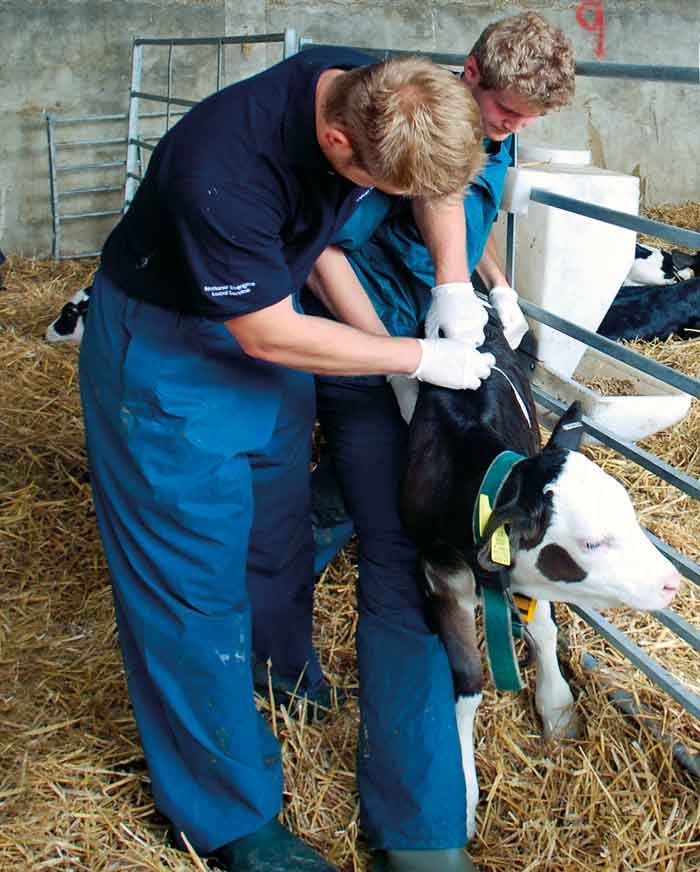
Vaccination and disease prevention
As veterinarians and medical professionals reduce the reliance on antimicrobials, vaccination remains the best tool to control disease, and improve animal health and welfare. Efficacious use of vaccines is needed to obtain a protective immune response, but with more than 40 vaccines available in cattle – all with differing protocols and immunity effects – a large margin for error exists6.
It is important the veterinarian is involved to consider all aspects of the vaccine and farm holistically so he or she can recommend suitable vaccination. Farmers perceive a vet’s key roles in vaccination as identifying a problem, diagnosis, offering advice, providing vaccines and implementation of protocols7. To give appropriate advice, a farm vet must consider several different aspects of vaccination8,9.
Type of farm
It may seem basic (and sometimes embarrassing to ask), but finding out what they actually do on the farm is vital – and this doesn’t just mean categorising as dairy or beef.
Many farms will have multiple enterprises on the unit and it is important to understand how each one is being managed, as vaccine protocols may need to be different and can have an impact on each other. Are they a dairy unit that also keeps store cattle? Does a calf rearer keep until finishing or sell as a calf?
Having one vaccination protocol for a whole farm may be simpler, but may not always be the answer.
Age of animal
It is important to establish the age of the animal a problem is occurring in or the age it was added to the farm. Little advantage exists in vaccinating calves for pneumonia from three months of age when clinical signs are seen at two months of age. Similarly, you must think about the age of the animal during management changes when the risk period is greatest.
It may be necessary to add vaccines to the protocol as animals age that weren’t previously required – for instance, infectious bovine rhinotracheitis or bovine viral diarrhoea.
Onset of immunity
Choosing a vaccine with an appropriate onset of immunity is vital to ensuring adequate efficacy. Young animals bought or brought on to a new unit, and animals born and housed soon after birth, are at a greater risk and are likely to benefit from a vaccine that uses mucosal pathway of immunity.
For this reason, animals born in autumn may need a different vaccine protocol to those born in spring, as they will be housed sooner.
Longevity of cover
All vaccines have different duration of immunity, and intranasal vaccines will cover for a shorter period. It is important to discuss the need for repeating/boosting the vaccine, if necessary, or using a different vaccine as the risks change.
Timing of vaccination
This is another key area that is often a big reason for disease, despite vaccination. Vaccinating sick animals, vaccinating too late for immunity to develop and not vaccinating the dam in time to benefit colostrum can all lead to disappointing results and poor health.
Diseases covered
Appropriate testing of disease pathogens is crucial to ensure appropriate vaccines are used. If a farmer complains a vaccine isn’t working, it would be astute to check if a pathogen not covered by his or her vaccine protocol is causing the issues.
Testing/disease-free accreditation
Important guidelines and regulations are in place behind testing for health status. If you are recommending vaccine protocols, these must be considered so they do not affect testing results.
Husbandry and nutrition
Housing
Successful calf housing is dependent on control of environmental factors and appropriate input of resources. Imbalances of moisture, fresh air and air speed within a housing system can have an impact on calf health that will lead to losses and under performance.
Too much moisture and too little fresh air will lead to an increase in microbial activity, as well as an increase in the concentration of gases such as ammonia and a decrease in oxygen. A low air speed (lower than 0.2m/s) can result in a lack of fresh air, but an air speed of greater than 0.5m/s – particularly in youngstock – can lead to excessive energy losses to keep warm and hypothermia.
A wind speed of more than 2m/s will lower the lower critical temperature of a four-week-old calf to 9°C. Appropriate housing requires both adequate inlets and outlets for air to prevent stagnant air pooling while aiming to stop excessive draughts at animal level.
Further to this, the farm’s husbandry management is equally important. Access to clean water (not just from milk) that provides enough space for at least 10% of calves in a group to drink at any one time is necessary from the birth.
Water passes into the rumen and reticulum, unlike milk, and plays an important role in the development of the rumen and reticulum. Restriction of water has been shown to decrease the amount of starter feed intake, and consequently growth rates.
Bedding should be clean and dry, and provide adequate thermal protection to the calf. Calves spend an average of 20-plus hours each day lying down, which increases when they are sick. If bedding is wet or uncomfortable, this decreases, and can affect calves’ growth and health11.
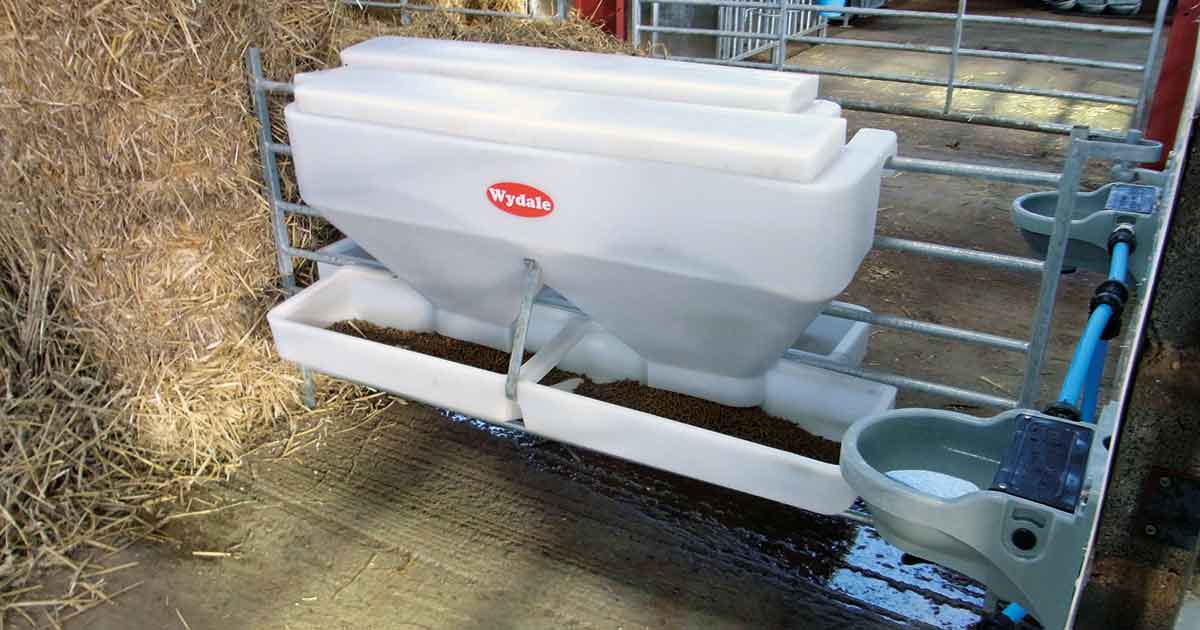
Hygiene
Housing, machinery and equipment need to be easily and frequently cleaned to prevent the spread of disease and infection in new calves introduced to the environment. Table 2 shows the recommended protocol to adequately disinfect, but if a deep clean is required, it may be necessary to add steam cleaning or use of a burner to the process.
| Table 2. Disinfection protocols | |||
|---|---|---|---|
| Step | Solution | Temperature | Result |
| Rinse | Water | 32°C to 38°C | Removes dirt and milk |
| Soak | Detergent – chlorinate alkaline solution | Approximately 55ºC | Kills bacteria and lifts milk proteins |
| Scrub | To remove all remaining organic material and residue | ||
| Wash | Clean water | Higher than 50°C | Prevents particles reattaching to equipment |
| Rinse | Disinfectant | As per product instructions | Prevents growth of any remaining bacteria |
| Dry | Dried and stored off the floor | ||
| Agriculture and Horticulture Development Board Better Calf Housing, 2018./td> | |||
Cryptosporidium species contribute to 34% of all diagnosed calf scours in the UK. Choosing a disinfectant and reaching the necessary temperatures are essential for the control of disease.
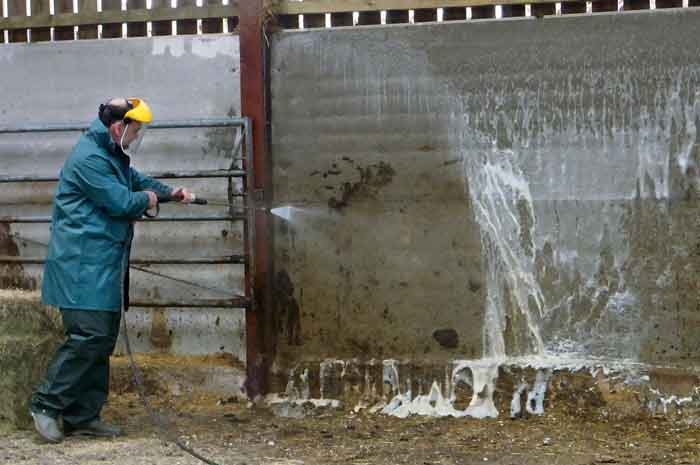
Nutrition
Colostrum, colostrum, colostrum… it is so important it feels like we shouldn’t even have to mention it. However, only 54% of farmers said their calves got at least 3L of colostrum in the first 24 hours. Even this is below the recommended 6L in 12 hours and is a good place to start when discussing nutrition.
Pre-weaning nutrition is crucial and the period of time when calves are the most feed efficient. It has been well established calves fed a higher quantity and quality nutrition in the first nine weeks increase parenchymal development, including mammary tissue, and this leads to an increased milk production in first lactation12.
A suckled calf will receive more than 125g/L dry matter from milk and feed 10 to 15 times a day, totalling more than 1.5kg dry matter a day. To achieve similar results from milk replacement it is important all calves are drinking an adequate amount (minimum 15% bodyweight) and the ingredients are readily digestible.
Calves love routine and are happy to drink the same amount at the same times everyday. However, external factors such as temperature and illness may increase the amount of milk required and this must be considered to maintain a high daily liveweight gain.
Water, forage and start feed should all be available from day three after adequate colostrum intake. Having free access to forage is very important in rumen development and digestibility, and has been shown to improve feed intake and increase performance13. All calves should be eating start feed independently at around six to eight weeks to achieve a smooth weaning period.
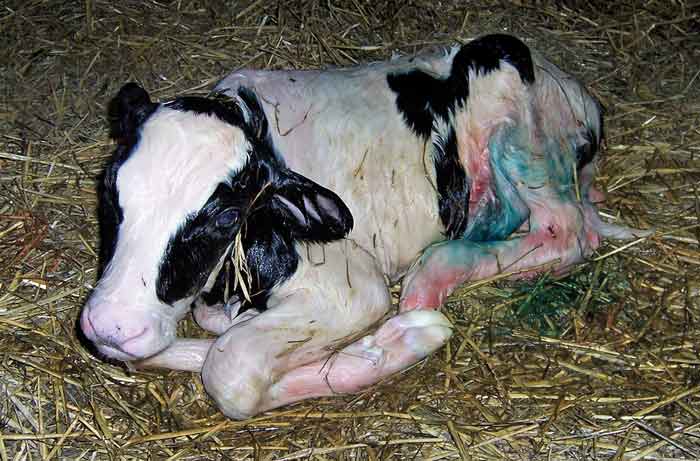
Conclusion
Vets can make significant difference to the performance of youngstock in several areas. Identifying problems, engaging farmers, setting goals, monitoring and reviewing outcomes can greatly enhance the degree of success, and vets need to be at the heart of these changes to achieve the desired results.
